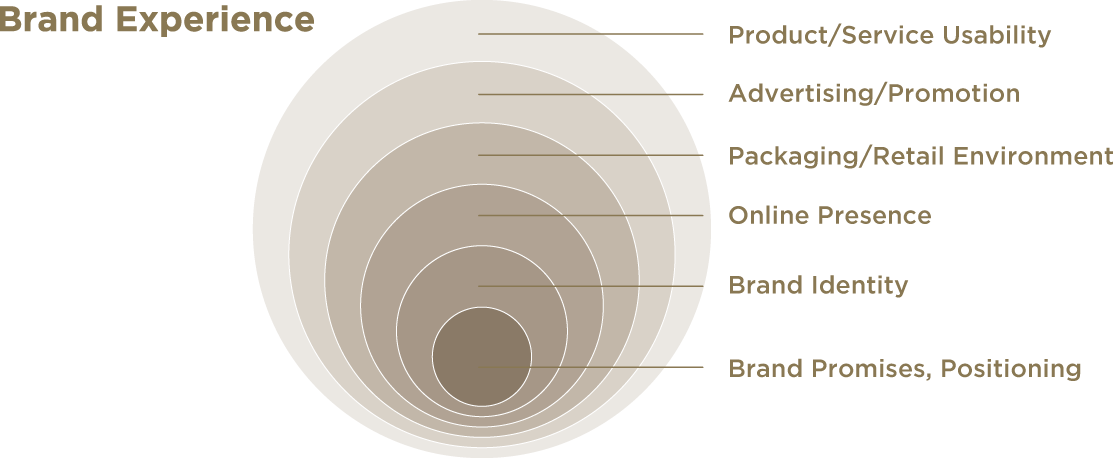Depending on whom you ask, the term “branding” can mean different things to different people or groups of professionals. Manufacturers, distributors and retailers each have their own perception about the value that their products or services deliver to customers. So when trying to promote their brand, where should they go for help?
To the advertising agency, branding is about promotion and repetition: saturate the media with images and messaging so that hopefully the product or service stays “top of mind” with the customer.
To the marketer, branding is about the message: what are the benefits of the product or service and what media will be used to communicate it?
For the public relations professional, branding is establishing a relationship with the target audience, and making them feel good about the company and their purchase.
Finally, designers consider brands to be the aesthetic qualities associated with the product or service, such as its logo, packaging or support collateral.
The funny thing is that each of these professionals above seems to forget that branding is in the eye of the beholder, who is often the most important stakeholder: the customer.
Branding should be about the “complete experience that a customer has with a company, its products or services,” and it encompasses several levels of engagement with customers. Much like an onion, as one peels back the skin they will discover more about the brand, allowing them to connect at a more relevant and emotional level. Unlike onions, peeling back more layers won’t make your customers cry; instead, it will make them more loyal and fully engaged with the brand.
 The outer most layer of a brand is often the first impression that a customer will have, and it usually involves the experience with the product or service you provide. Is it of high quality and dependable? Was it easy to use, understand, and explain to others?
Part of the initial experience customers have with branding relates to the next layer, which is how the brand is promoted. Did the product or service work as advertised?
The environment in which a brand is sold or delivered is part of the brand experience. For a retail product, the packaging must communicate the value of the brand. Sometimes the store where the product is sold (think Apple) or the office in which a service is delivered is part of the brand experience. In the case of a virtual store, the online presence becomes the next layer of a brand experience.
It used to be that if you had a good handshake and a professional looking business card, you could meet with a prospective customer and sell them your brand. In the Internet age, this is no longer an option—your brand must have a professional web site that allows customers the opportunity to explore your product or service offering in a pressure free environment. It must be relevant to the audience, informative, provide contact information, and reinforce the other layers of branding discussed above.
At the core of every successful brand is its identity and brand essence. The identity is more than a logo—it includes every piece of visual and verbal communication you have with customers, from the uniforms worn by employees to the way in which the receptionist answers the phone. Finally, and most importantly, is the essence of your brand: this is the compelling story behind your product or service, and the promises that you make to customers. It is the reason they should buy your brand over any other. It must be relevant and connect at an emotional level with their desires and needs.
The outer most layer of a brand is often the first impression that a customer will have, and it usually involves the experience with the product or service you provide. Is it of high quality and dependable? Was it easy to use, understand, and explain to others?
Part of the initial experience customers have with branding relates to the next layer, which is how the brand is promoted. Did the product or service work as advertised?
The environment in which a brand is sold or delivered is part of the brand experience. For a retail product, the packaging must communicate the value of the brand. Sometimes the store where the product is sold (think Apple) or the office in which a service is delivered is part of the brand experience. In the case of a virtual store, the online presence becomes the next layer of a brand experience.
It used to be that if you had a good handshake and a professional looking business card, you could meet with a prospective customer and sell them your brand. In the Internet age, this is no longer an option—your brand must have a professional web site that allows customers the opportunity to explore your product or service offering in a pressure free environment. It must be relevant to the audience, informative, provide contact information, and reinforce the other layers of branding discussed above.
At the core of every successful brand is its identity and brand essence. The identity is more than a logo—it includes every piece of visual and verbal communication you have with customers, from the uniforms worn by employees to the way in which the receptionist answers the phone. Finally, and most importantly, is the essence of your brand: this is the compelling story behind your product or service, and the promises that you make to customers. It is the reason they should buy your brand over any other. It must be relevant and connect at an emotional level with their desires and needs.